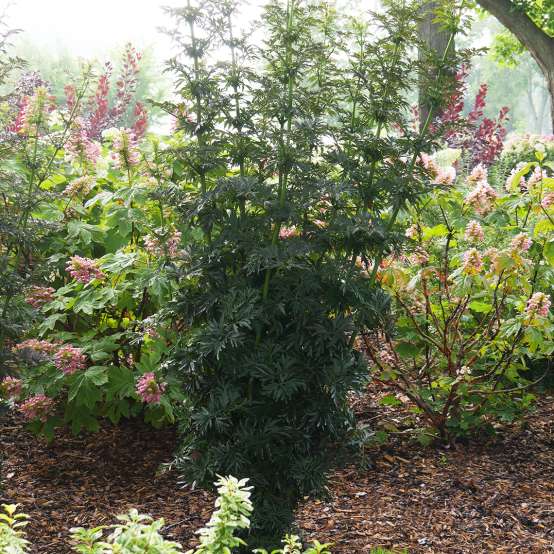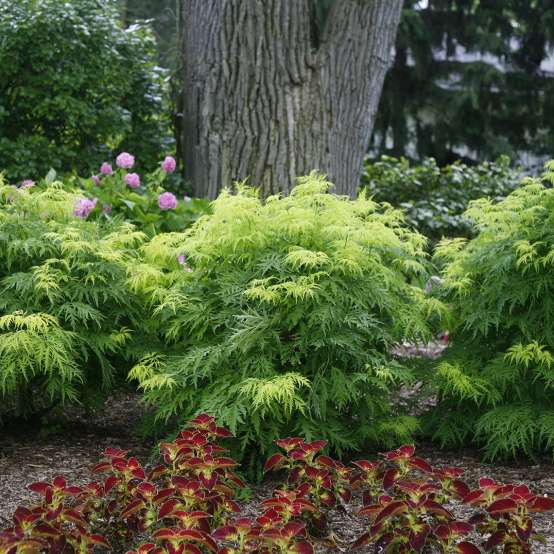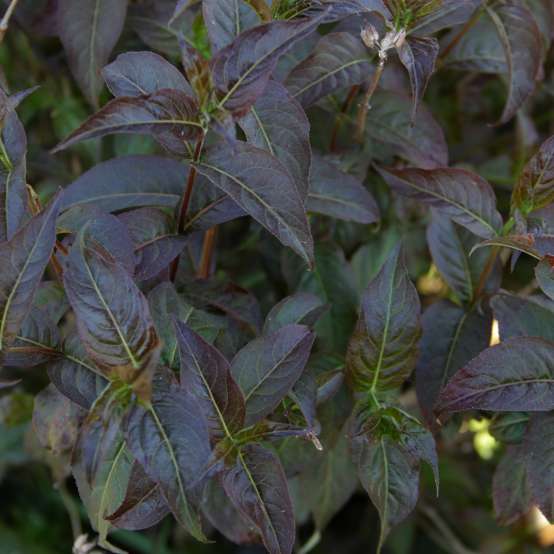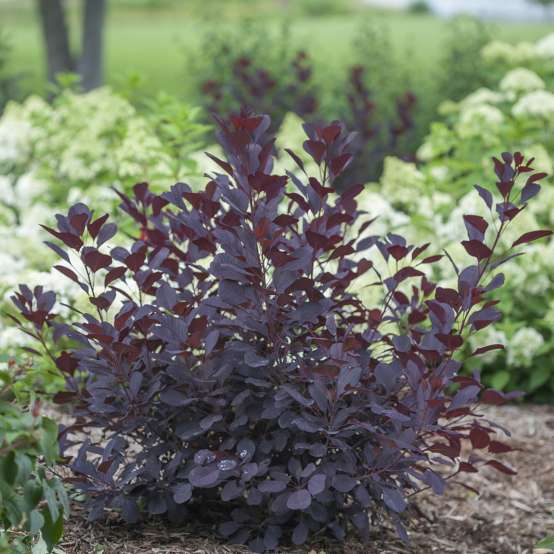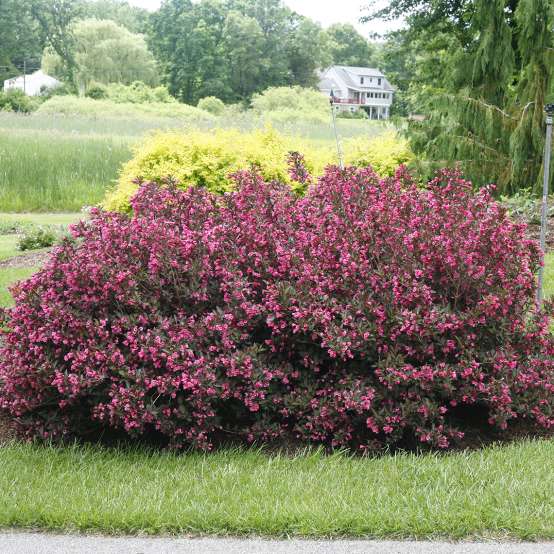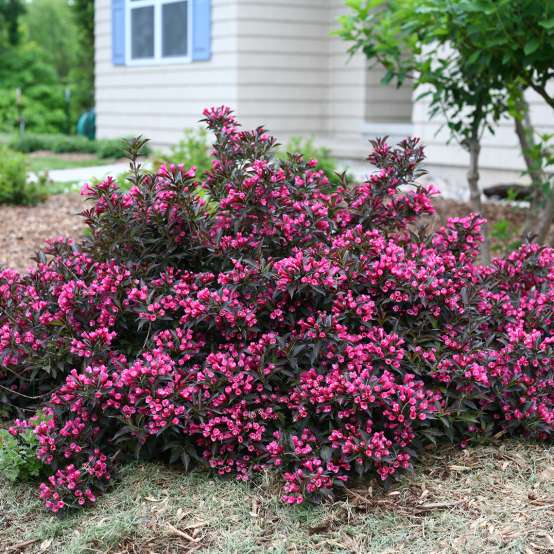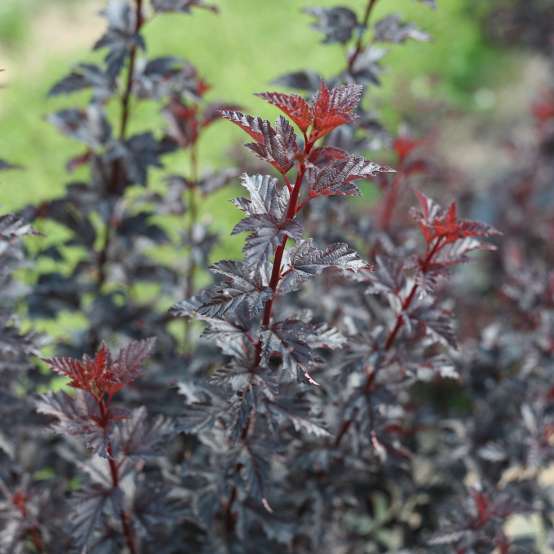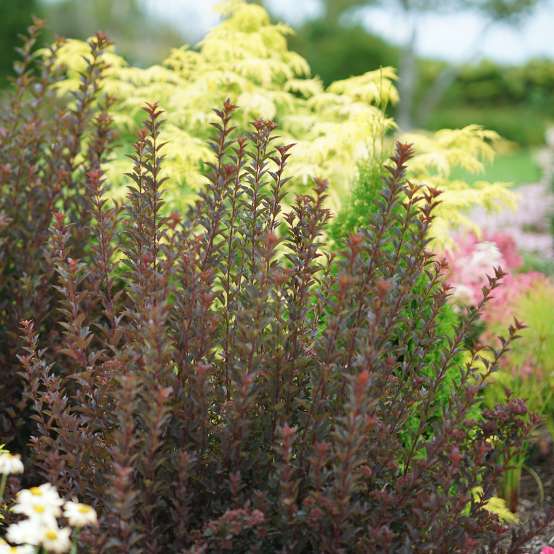Clicking the following controls will change the main image displayed above.
- Benchcard: Black Lace® Sambucus Benchcard
- Tag: Black Lace® Sambucus Tag
- Grower Sheet: Black Lace® Sambucus Grower Sheet
- Spec Sheet: Black Lace® Sambucus Spec Sheet
- Article: Guide to Elderberries

Meet the Breeder
Ken Tobutt
Kent, England
BLACK LACE®

Elderberry
Sambucus nigra
'Eva'
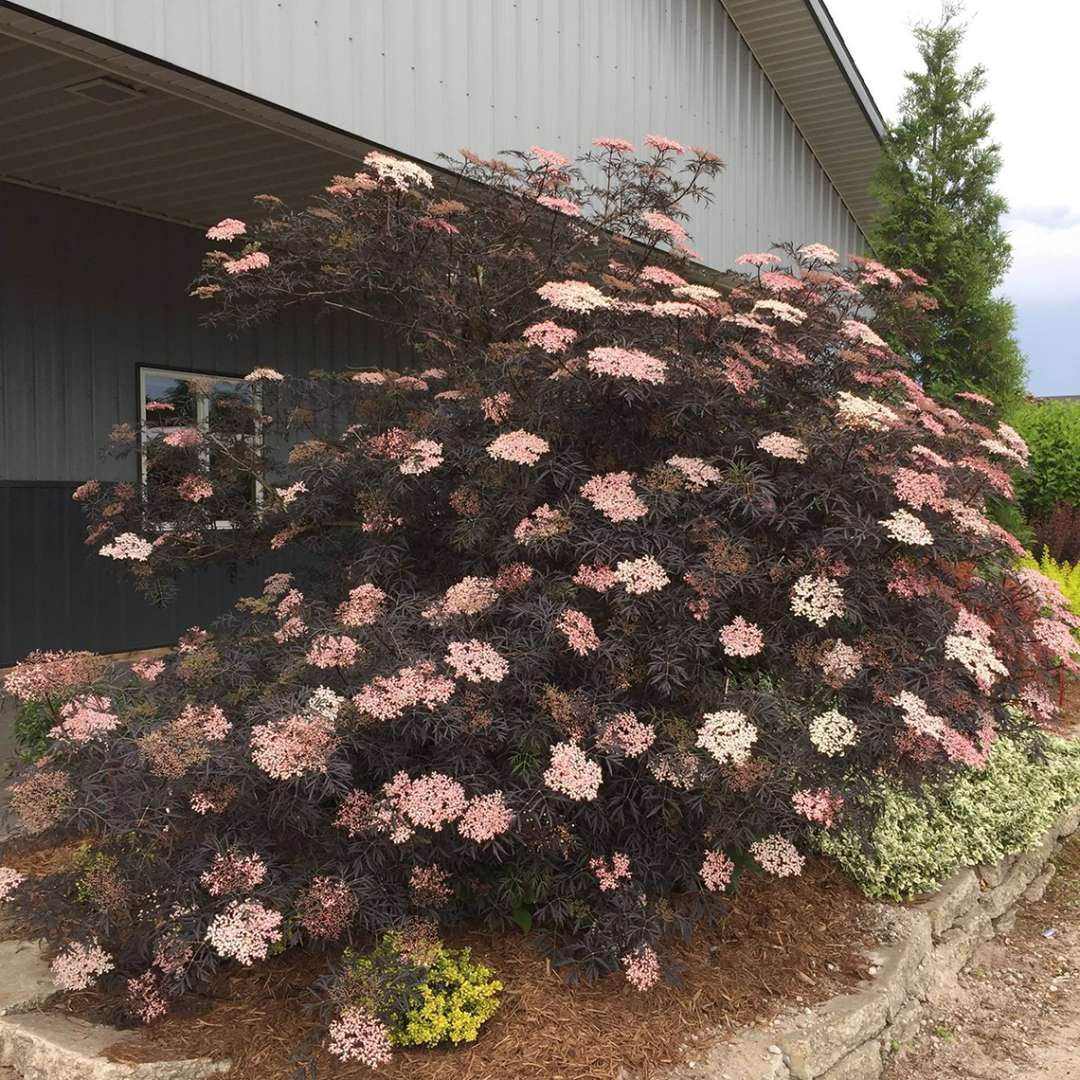
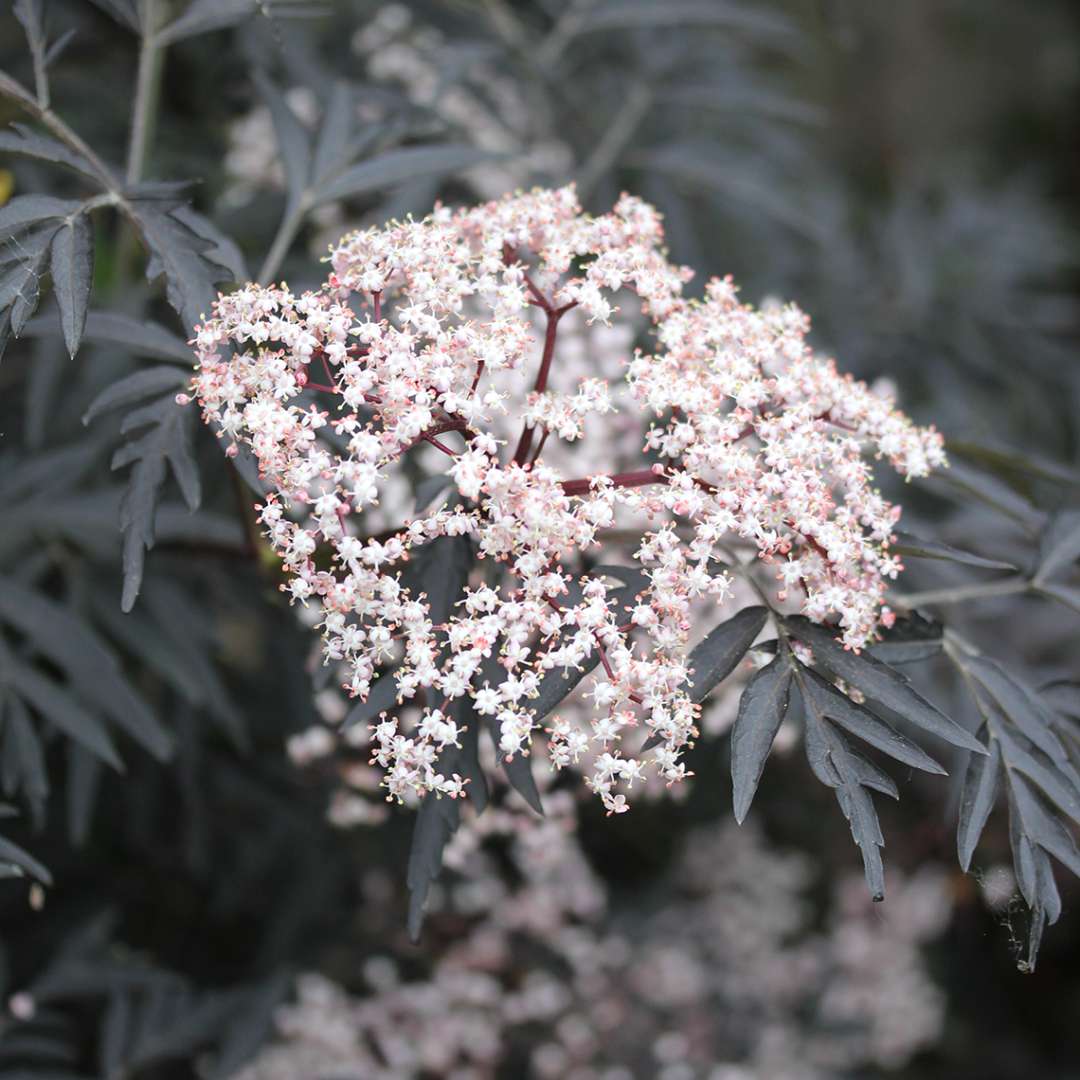
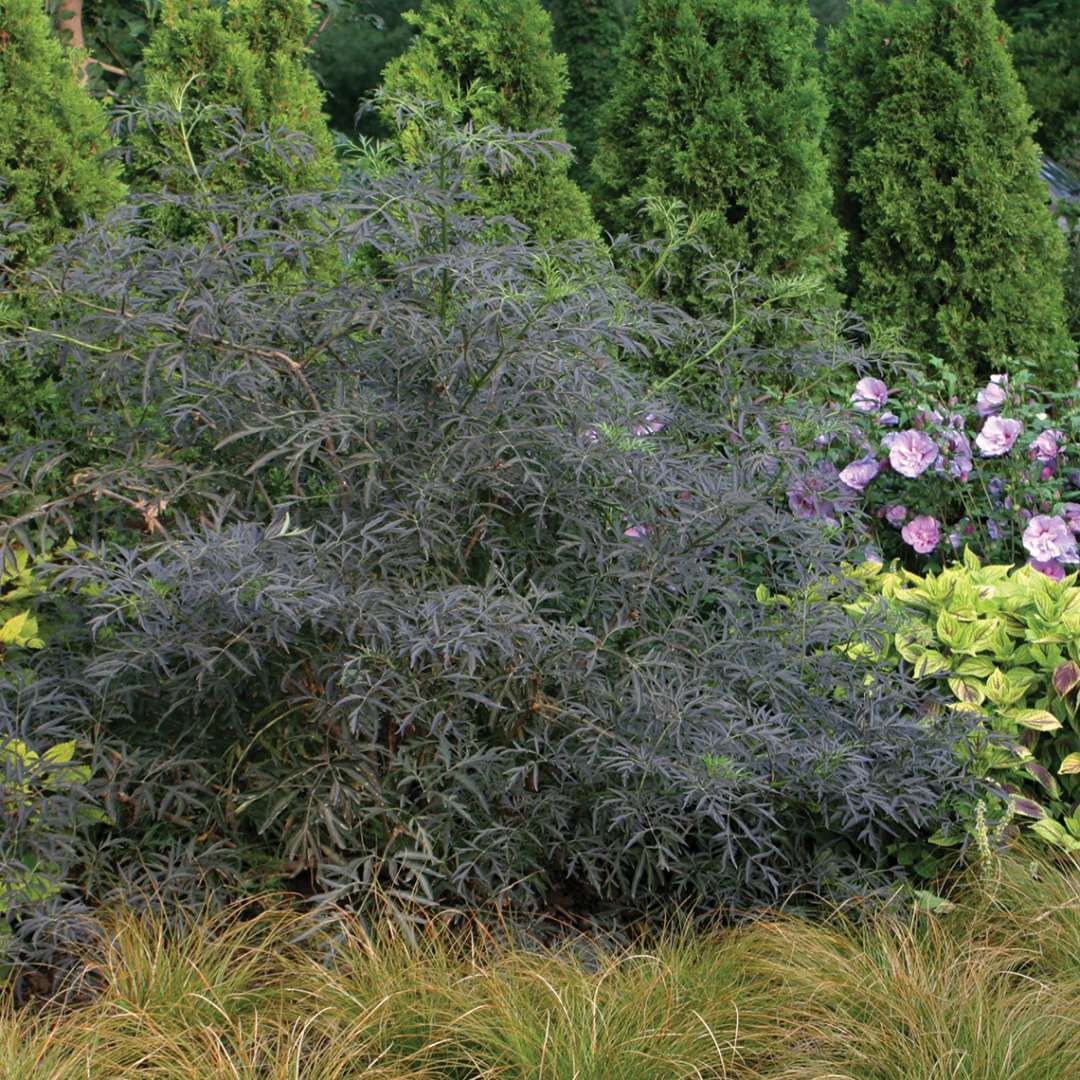
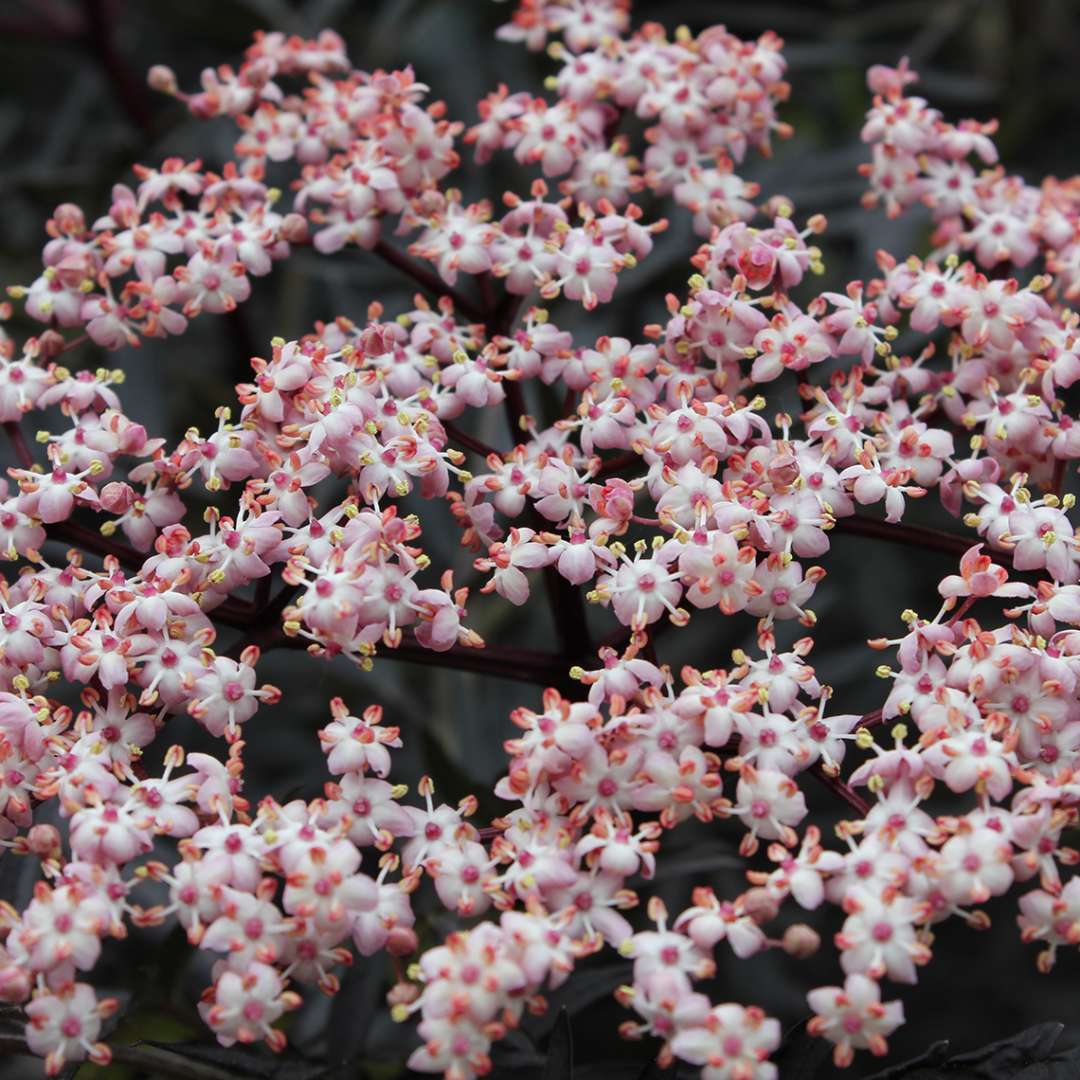
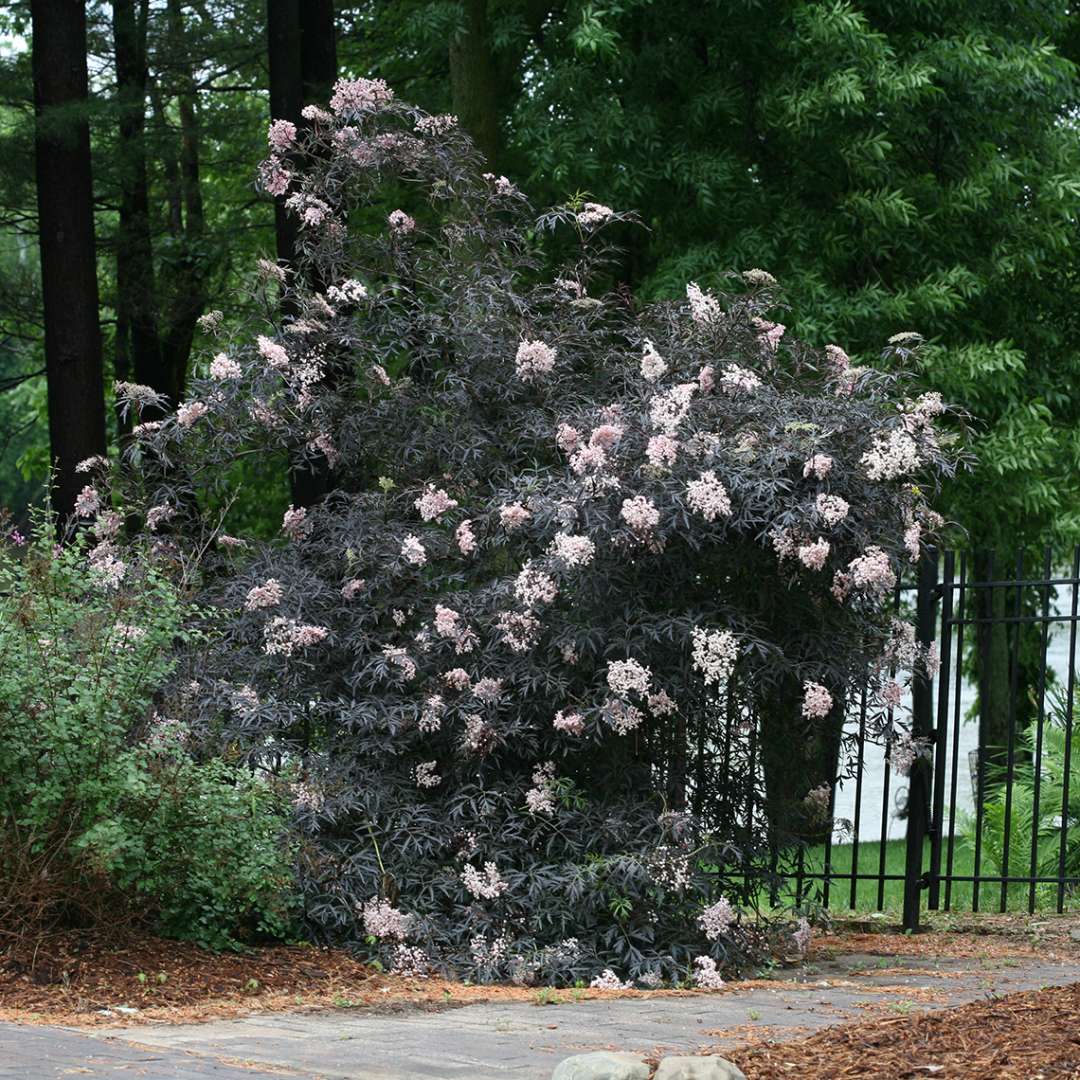
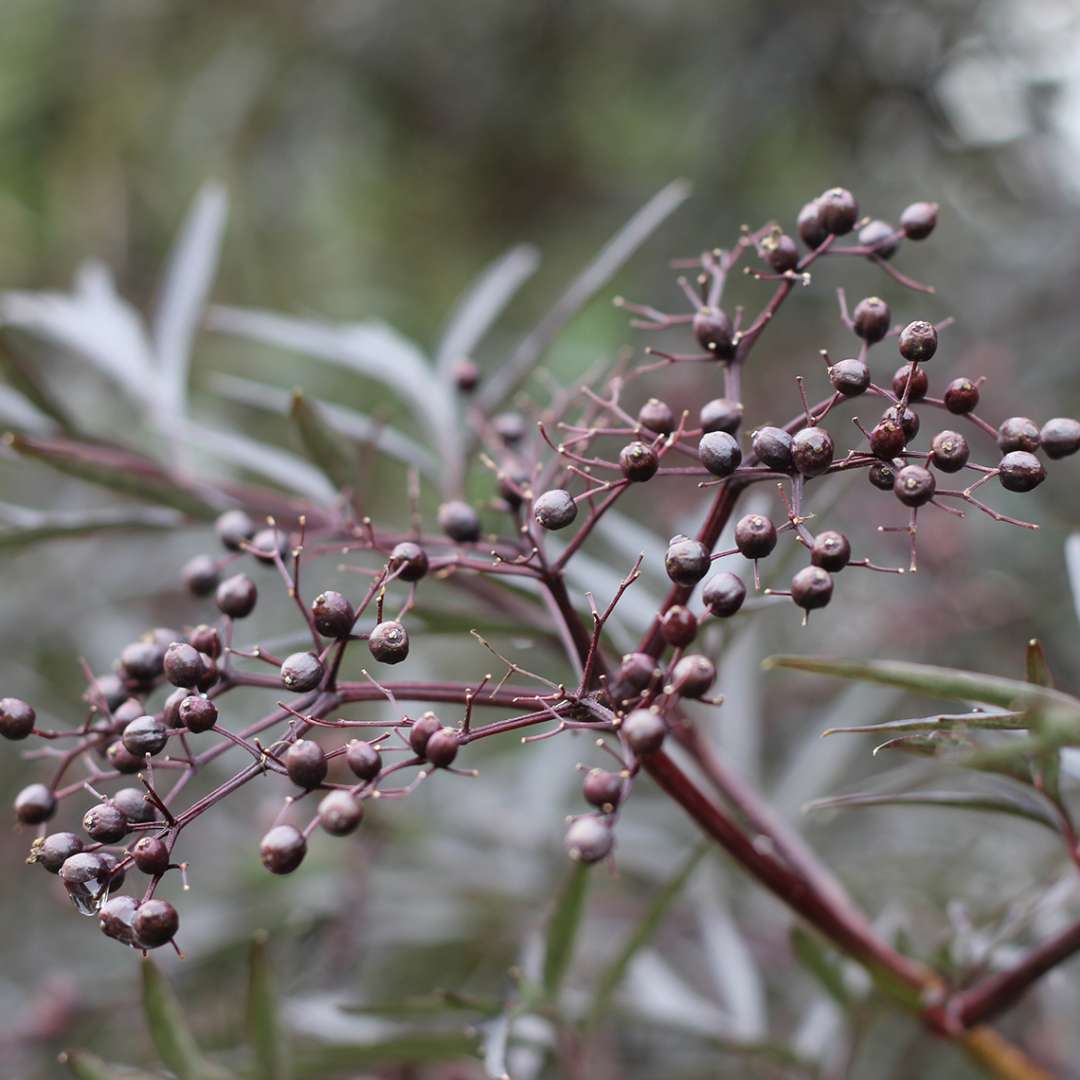

- Unique foliage
- Fragrant flowers
- Award winner
- Description
With Black Lace® elderberry, you get the deep color and fine texture of a Japanese Maple but on a much hardier and more durable plant. This elderberry boasts finely dissected purple-black foliage, and in early summer, wide, lacey pink flowers will pop against the dark foliage. When planted near another cultivar of Sambucus nigra, the pink flowers will turn into edible black berries. This large shrub is a great choice for a specimen, but it can also be used in groupings and borders. Black Lace® elderberry has enormous appeal at retail and in the landscape, and it’s super tough, tolerating black walnut, deer, and drought.
- Awards
- ANLA #1 New Variety for 2006; Silver Medal, Royal Boskoop Horticulture Society; 2012 Royal Horticultural Society Award of Garden Merit
- USDA Zone
- 4 - 7 (-30°F/-34.4°C)
- Exposure
- Full sun, Part sun
- Height
- 6 - 10'
- Width
- 6 - 10'
- Finish Time
- .5 season
- Type
- Deciduous
- Bloom Time
- Early summer
- Flower Color
- Pink
- Foliage Color
- Black
- Liner Sizes
- 2 1/4", 4", Quick Turn
General Care
Soil
Extremely adaptable to soil pH and moisture levels.Pruning
Blooms on old wood. However, pruning after bloom will remove the potential for fruit to set.Uses
Grow either as a shrub or cut it back every year and make it into a bold perennial. Outstanding as a specimen, but also good in groupings and masses, perennial and shrub borders, as a specimen or screen.Growing Tips
If fruit is desired, plant with Black Beauty, Instant Karma, or Laced Up elderberry. Both flowers and ripe berries are edible; however, foliage and stems are toxic.Features: Edible, Deer resistant, Foliage interest, Drought tolerant, Alkaline soil, Award winner, Clay soil, Attracts pollinators
Filters: Botanical genus: Sambucus, Common name: Elderberry, Retail program: Proven Winners® ColorChoice®, USDA Zone 4, USDA Zone 5, USDA Zone 6, USDA Zone 7, Exposure: Full sun, Exposure: Part sun, Bloom time: Summer, Pink flowers, Black foliage
Features: Edible, Deer resistant, Foliage interest, Drought tolerant, Alkaline soil, Award winner, Clay soil, Attracts pollinators
Filters: Botanical genus: Sambucus, Common name: Elderberry, Retail program: Proven Winners® ColorChoice®, USDA Zone 4, USDA Zone 5, USDA Zone 6, USDA Zone 7, Exposure: Full sun, Exposure: Part sun, Bloom time: Summer, Pink flowers, Black foliage

